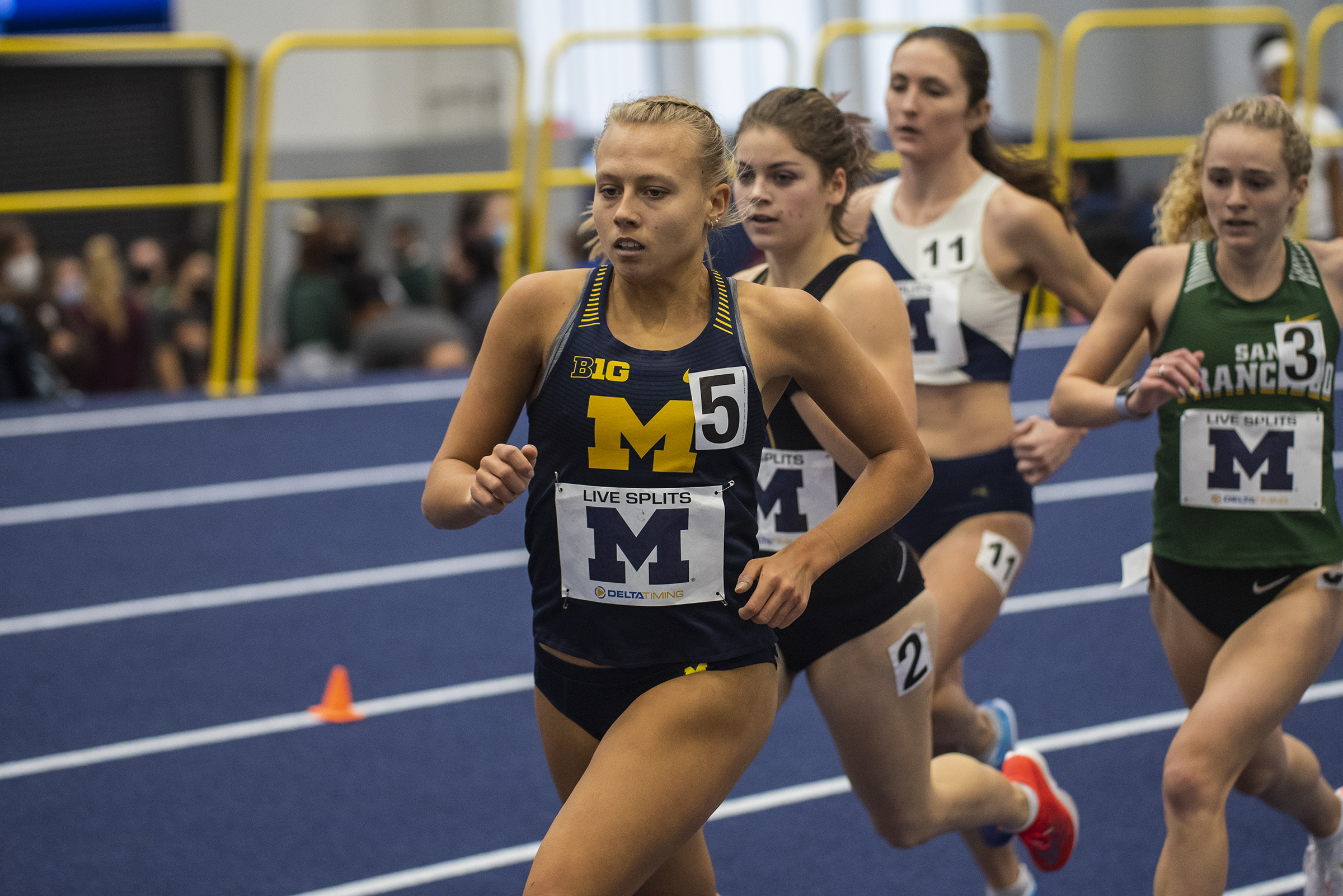“It’s a question of time, not of look”: nutrition in women’s running

For athletes, food is fuel.
Athletes are constantly informed when to eat, what to eat and how much to eat. They are told what to eat before, during and after training. Food is an essential part of an athlete’s performance and recovery.
But this system forces women to change their bodies to accommodate a leaner archetype, turning food from friend to foe.
More than 25.5% of female collegiate athletes reported symptoms of improper eating during their careers in 2009, and that number is growing. Yet some athletes want to remind people that food is still fuel.
For Michigan track and field seniors Kayla Windemuller and Samantha Saenz and sophomore Katelynn Hart, food in running has been something they’ve learned to adapt their relationships with over the course of their running careers. They chose to share their lesson through Instagram accounts that embrace a less restrictive sports diet.
“I had perceptions of what I should be eating and now I think all types of foods can fit into a runner’s diet,” Hart said.
Saenz and Windemuller are both distance runners who launched their Instagram accounts during the COVID-19 pandemic. They were cooking and cooking up a storm during this extra time and wanted to share their creations and recipes with the world.
Hart, another long-distance runner, opened her account when she was living alone for the first time and started cooking for herself.
“I found it fun to be creative in the kitchen and to cook for my friends,” Hart said.
Their innocent adventure turned into an essential lesson in nutrition and its importance.
Hart, Windemuller and Saenz all wanted to use their platforms to better educate people on the importance of nutrition in athletics.
“I used to cut ice during the season, and now I have it almost every night,” Windemuller said. “It’s important for others to realize that every food has its place.”
Women’s nutrition and diets have always been a controversial topic in the running community.
In 2019, Mary Cain, a Nike track and field star, revealed how Nike and coach Alberto Salazar were starving female athletes and urging them to get slimmer and slimmer. Cain herself was pressured into doping and developed an eating disorder.
95% of eating disorder cases are in women and 90% in people under 25.
“Especially (for) women, there’s a lot of talk and stress about fitting the ideal body type, and being a runner adds another layer to that,” Hart said.
Saenz added, “It’s a big talking point for women’s sports because of the way our bodies change.”
Saenz praised having teammates who help each other through these body changes and take the pressure off, while Windemuller had a more personal experience to tell.
When she was in high school at Holland Christian, she was short in stature. She hadn’t grown up yet and people noticed that.
“People were commenting to my coaches.” said Windemuller. “They were saying things like, ‘Oh, she looks really good.’ ”
Around this time, she found her passion for running and started eating healthier to improve her times. However, as she began her college career, she dealt with numerous injuries and realized that what she ate had an impact on her injuries and her performance. Diet and nutrition helped her grow in sport.
Now those same people were commenting on how strong she looked.
“It should be less about what I look like and more about running as fast as I can in my entire life,” Windemuller said. “It’s about how I feel, how I run and how I train.”
Regardless of their flexible diets, they have proven they can still perform.
Windemuller had four career-best times this year during the indoor season — in the 800 meters, mile, 3,000 and 5,000 — and had five top-10 finishes during the cross country season.
Saenz also set four career bests – 800, mile and 3,000 twice – and placed fifth at the Michigan Open in the five-kilometre race.
Hart had five top-10 finishes during the cross country season, including winning the Michigan Open individual title in the five kilometer.
The trio uses their platforms to show more than salads, but cookies, cinnamon rolls and banana bread. Together, they help combat the rigid structure of nutrition in women’s sports and emphasize that you can still eat dessert and break records.